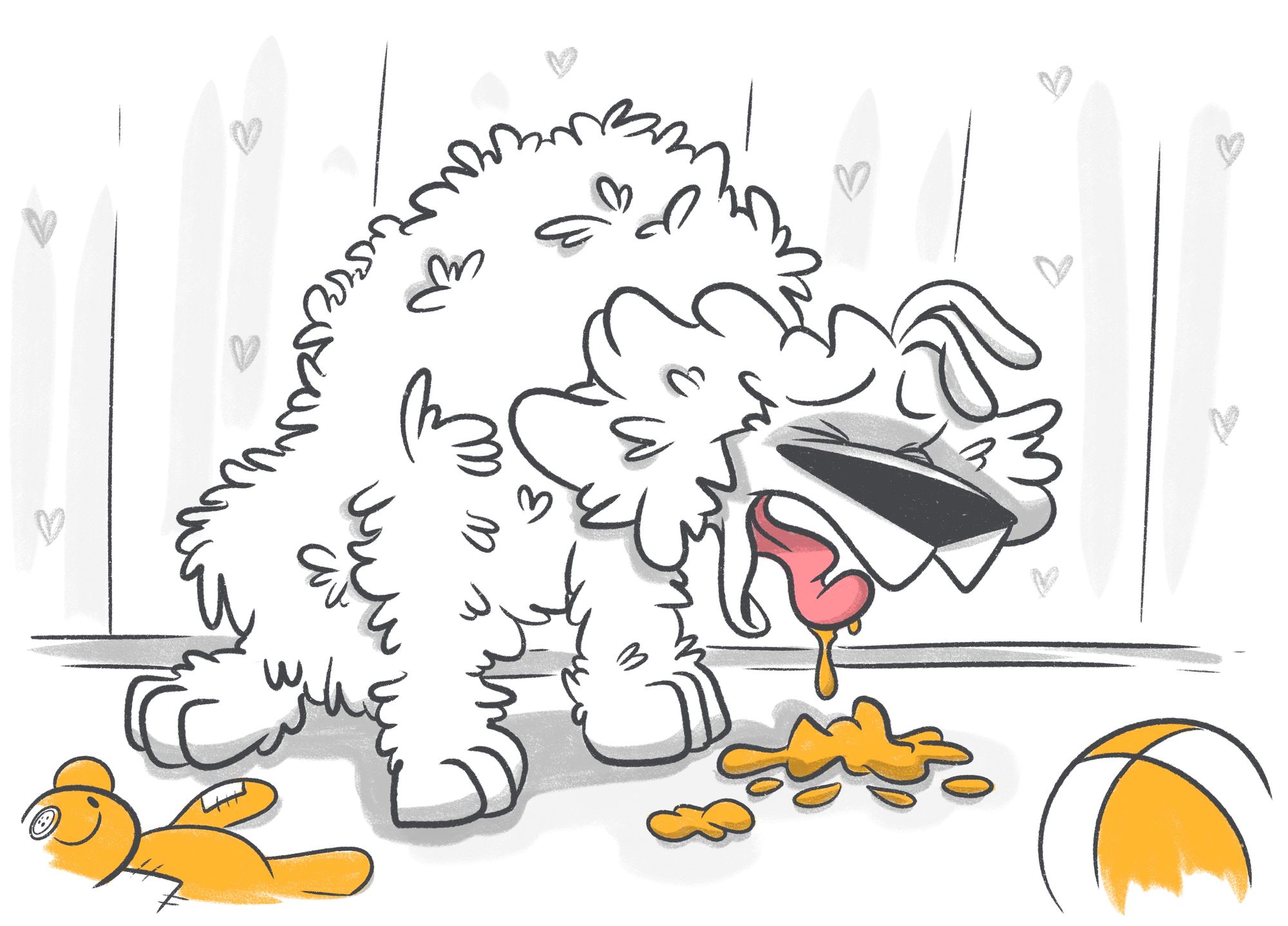Looking at your dog’s vomit may be displeasing, but it can give you an indication of the status of your dog’s health. While vomiting in dogs is common and, in some cases, might not be a cause for worry, it may also be a signal of an illness or disease that needs to be addressed.
Being aware of the various colors and consistencies of dog vomit, as well as what it implies, may help in understanding the cause of the problem. If you are worried or unsure about what your dog’s vomit means, it’s best to call your veterinarian for advice.
Content:
Why Do Dogs Vomit
If you’re a dog owner, you may have already experienced your dog vomit on occasion without any issue. However, it’s important to know that there are different types of dog vomit, with causes ranging from minor to severe.
Stop Googling - Ask a Real Vet
There are several possible reasons why dogs vomit. On the one hand, it may just be a minor intestinal issue that may be due to intestinal parasites or ingesting something such as garbage, table scraps, spoiled food, or even insects.
On the other hand, vomiting may be a symptom of something more serious, such as a viral or bacterial infection, allergies, inflammatory issues such as intestinal obstruction, pancreatitis, inflammatory bowel disease, chronic gastritis, or dysfunctional organs due to kidney failure, liver disease, or cancer.
Dog Vomit Color Guide
Dog Throwing Up White Foam
If your dog is throwing up white foam, it may mean that your dog has an empty stomach and is vomiting liquids, or they may be having saliva regurgitation. Another reason may be that they are coughing white foam due to kennel cough.
However, if your dog is attempting to vomit but fails, or if they are constantly vomiting white foam in trace amounts, it may be due to bloating or more serious problems in the gut. This may be a cause for an emergency, so your dog must be brought to the vet clinic immediately.
To watch out for signs of vomiting in your dog, a pet camera such as the Petcube Cam will help you closely monitor them. With the camera’s high quality and innovative features, you’ll be able to keep tabs on your dog and detect any signs they may exhibit early on.
Dog Throwing Up Yellow Foam
If your dog is throwing up yellow liquid or foam, this is usually associated with bile, especially when it happens when your dog’s stomach is empty. In some cases, yellow vomit may indicate bilious vomiting syndrome, according to an NCBI study.
On the other hand, yellow vomit may be a sign of liver disease. Check if your dog is exhibiting signs of jaundice. If so, diagnosis and treatment by a veterinarian are necessary.
Dog Throwing Up Green Foam
Green vomit may mean that your dog has eaten something green, such as grass. On the other hand, it may also indicate that there is much bile in the canine companion’s stomach.
Dog Throwing Up Clear Liquid
If your dog vomits clear liquid, it’s possible that they drank water too quickly. However, other possible causes are more serious, such as poisoning, hyperthyroidism, indigestion, infectious diseases, gastrointestinal obstruction, parasites, and pancreatitis.
Note that the color of your dog's vomit may also be affected by the color of what they ate, so you should consider this as well. Apart from the color, the consistency of your dog’s vomit may also give you a clue about what’s going on.
What to Do If Your Dog is Vomiting

What to do depends on the cause of your dog’s vomiting. When it comes to acute vomiting, it is usually resolved within the day without the need to go to the vet. However, if the vomiting continues even after 24 hours or if they vomit more than twice a day, you should bring your dog to the vet immediately to determine if there is a more serious underlying condition that needs to be treated.
Meanwhile, if the vomiting is chronic or if your dog exhibits symptoms such as appetite loss, lethargy, fever, abdominal pain, dehydration, diarrhea, and blood in vomit, it is crucial to bring your dog to the vet to be properly diagnosed and treated. It would also help to take a photo of your dog’s vomit so you can show it to your vet.
In severe cases of vomiting, emergency vet care will be needed. That is why it helps to be prepared for any pet emergency. Having a pet Emergency Fund will greatly help in times of such emergencies. That way, you won’t have to worry about your veterinary bills and will instead be able to focus on providing the best care for your pet during this vulnerable time.
FAQ
Why is my dog throwing up undigested food?
Undigested food in your dog's vomit may be due to them not being able to digest the food that they recently ate properly. On the other hand, they may have ingested food that doesn't sit well with them.
Why is my dog vomiting and shaking?
If your dog is throwing up and shaking at the same time, one possible reason is an emotional imbalance (ex., too much excitement, anxiety, or fear). If so, both the vomiting and shaking should go away within 30 minutes to an hour of removing the stimulus.
However, note that dog shaking and vomiting that happens simultaneously may also be due to something serious that needs immediate medical care. These may include poisoning, glucose imbalance, or metabolic disease, among others.
My puppy keeps throwing up. What should I do?
Throwing up is common in puppies and is usually not a cause for worry. If your puppy is throwing up food, for example, it may be an effective way of getting rid of something that they shouldn't have eaten. However, this may not always be the case. There may also be cases when the vomiting is caused by a serious illness. If you are worried, it's best to call your vet immediately.
Was this article helpful?
Help us make our articles even better









